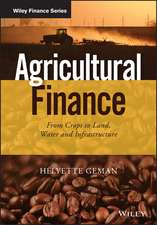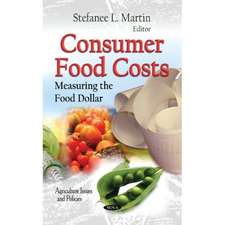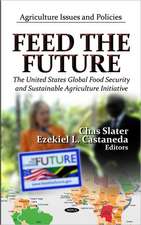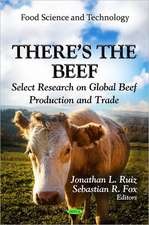High Agricultural Commodity Prices
Autor Randy Schnepfen Limba Engleză Paperback – 4 mar 2009
Preț: 225.72 lei
Preț vechi: 308.36 lei
-27% Nou
Puncte Express: 339
Preț estimativ în valută:
43.19€ • 45.09$ • 35.75£
43.19€ • 45.09$ • 35.75£
Carte disponibilă
Livrare economică 15-29 martie
Preluare comenzi: 021 569.72.76
Specificații
ISBN-13: 9781606920138
ISBN-10: 1606920138
Pagini: 272
Ilustrații: tables & charts
Dimensiuni: 142 x 211 x 14 mm
Greutate: 0.14 kg
Ediția:New.
Editura: Nova Science Publishers Inc
ISBN-10: 1606920138
Pagini: 272
Ilustrații: tables & charts
Dimensiuni: 142 x 211 x 14 mm
Greutate: 0.14 kg
Ediția:New.
Editura: Nova Science Publishers Inc
Cuprins
Introduction; Global Food Crises Declared by United Nations; Not All Commodities Are Equal; High Prices: A Case of Deja Vu; U.S. and Global Stocks Near Historic Lows for Several Crops; Many Commodity Price Records Established in 2008; International Index of Export Prices Record High; U.S. Farm Prices Projected Record High for Several Crops; Several Futures Prices Set All-Time Highs; Factors Behind the High Prices; Widespread Weather-Related Crop Shortfalls; Strong Economic Growth in Developing Countries; Weak U.S. Dollar Lowers Cost of U.S. Exports; Government Biofuels Policy; Foreign Government Policies to Limit Exports; High Energy Costs; Macroeconomic Linkages Reinforce Price Rises; Implications of High Commodity Prices; U.S. Farm Income Record High; Lower Government Farm Program Outlays ; Crop Insurance Premiums Costs Surge in 2008 ; Sharply Higher Feed Costs; Futures Market Dilemma; Expanded, More Intensive Agricultural Production; Converting Conservation Acres to Production ; Rising Food Price Inflation Impacts Consumer Budgets; Shortages, High Prices Hurt International Food Aid Prospects; Farm Commodity Market Outlook . Positive Short-Run Outlook, Especially for Food Crops; Long-Term Outlook Hinges on Productivity Gains; U.S. and International Policy Response; U.S. Industry Groups Decry Rising Costs of Grain as an Input; U.S. Congressional Action; Immediate International Food Crises Response; Long-Term Agricultural Productivity Response; Possible World Trade Organization (WTO) Implications; Index.


















